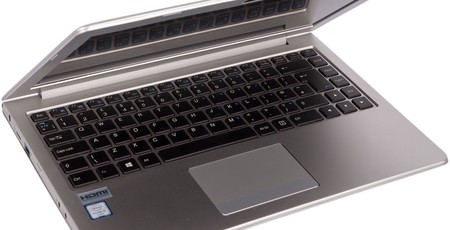
Manufacturer: PC Specialist
UK price (as reviewed): £799.00 (inc. VAT)
US price (as reviewed): N/A
If you’re not interested in gaming on the go, you open yourself up to a world of very portable laptops, as removing the power-hungry GPU from the equation cuts down massively on the thermal demands placed on a chassis. The 13.3” form factor is ripe for this, as it gives you a great balance of screen real estate and physical size. With these facts in mind, the Lafité III from PC Specialist is in for review. Coming in at well under £1,000, it could well be a solid and relatively low-cost alternative to the luxurious Ultrabooks that everyone would love to have but not everyone can afford.
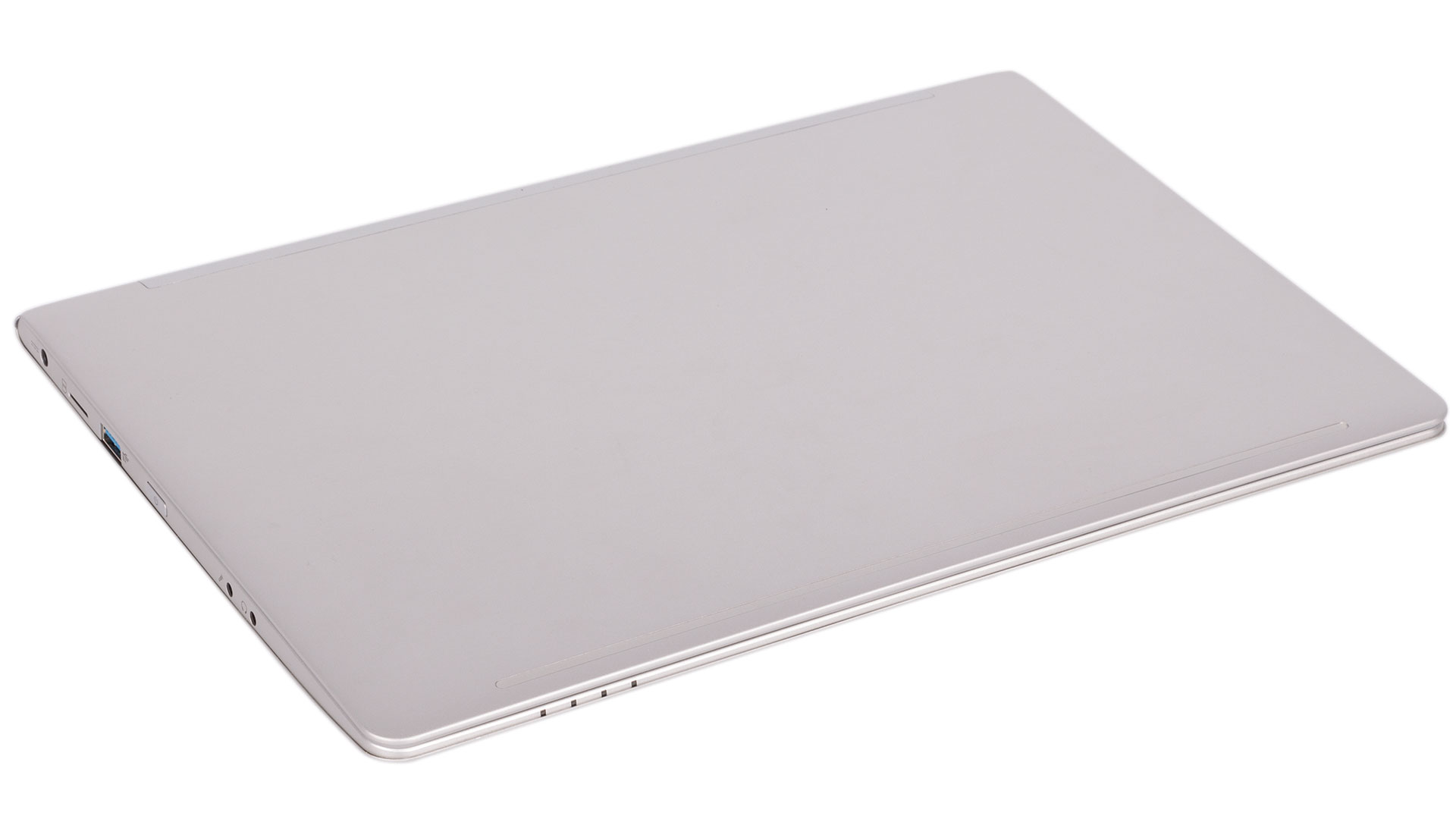
Although it certainly can’t match Apple, Dell, or Razer for sleekness, the silver chassis with black keys does work nicely. It also carries much less of a price premium than the Macbook, XPS 13, or Blade Stealth do, and, this being a PC Specialist laptop, is much more configurable. Our particular model sports the Intel Core i5-7200U (dual-core Kaby Lake with Hyper-Threading) with onboard Intel HD Graphics 620, 16GB of DDR4 memory, a 256GB SSD, and a 1TB HDD, but each of these can be swapped for different choices. All in all, it certainly looks like a decent specification for the asking price. Note that, as is the norm for PC Specialist, the price quoted in this review is for this specific build only – manually configuring a system will result in different pricing, even if you select similar or identical components.
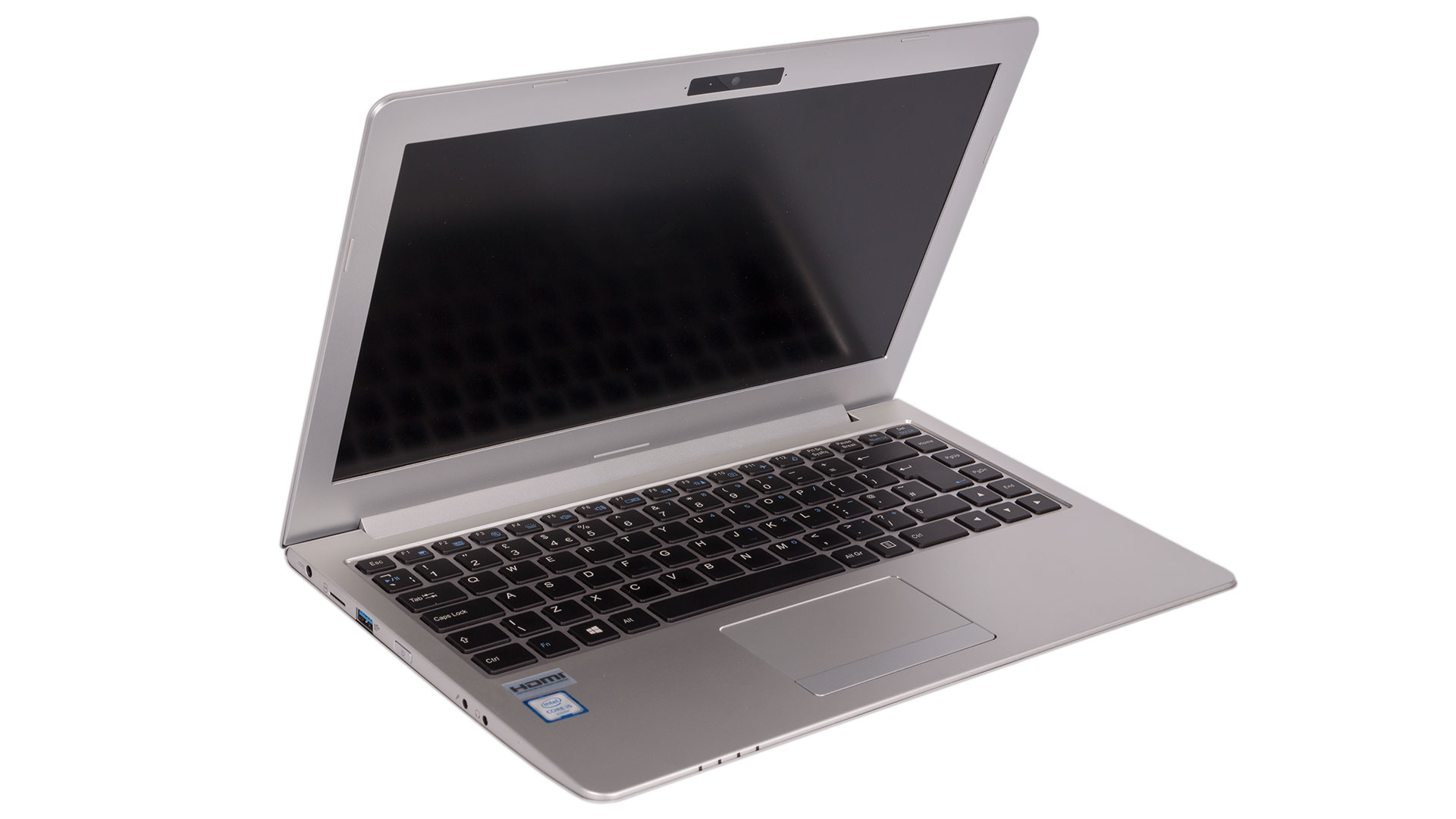
It’s also no match for the latest iterations of the aforementioned Ultrabooks for size and weight, but it is nonetheless very portable at less than 18mm thick and weighing 1.527kg. The quoted weight is 1.3kg, but that may be without the mechanical 2.5” HDD that our sample has – supporting these drives obviously factors into the size as well. Still, we’d be happy carrying this laptop around on a daily basis. It’s far smaller and lighter than your typical mid-range or even low-end gaming laptop, and trumps the bulky, plastic-fantastic designs you often see with less expensive laptops
The lightweight metal chassis is generally well constructed, although you should note that the fairly thick bezels around the screen are plastic. The design is straightforward enough, but the power button is oddly placed along the side. The indicator LEDs along the front could also be a bit more useful by not having the symbols showing what they indicate printed along the underside where you can’t see them.
The trackpad is well sized and has a separate button area with a satisfying and distinct click to both buttons.

The keyboard is also pleasant to use with a nice response to the keys, and you can rest your hands comfortably on the chassis without worrying about sharp edges (an issue with the previous model, the Lafité II). The keyboard is backlit in white with five levels of brightness available (or off) for working in low light. The FN key gives you access to a variety of the usual system controls including volume, screen brightness, keyboard brightness, airplane mode, and sleep.
The Lafité III uses a 1080p IPS display. We think this is a great fit for the resolution, allowing you to view things at 100 percent scaling without entering Squintville and still giving you the desktop real estate most of us are used to. Okay, so it’s not as crisp as the super high-resolution displays of more premium models, but it’s far better than the horrible 1,366 x 768 resolution that plagues so many low-cost laptops, even those with bigger screens.
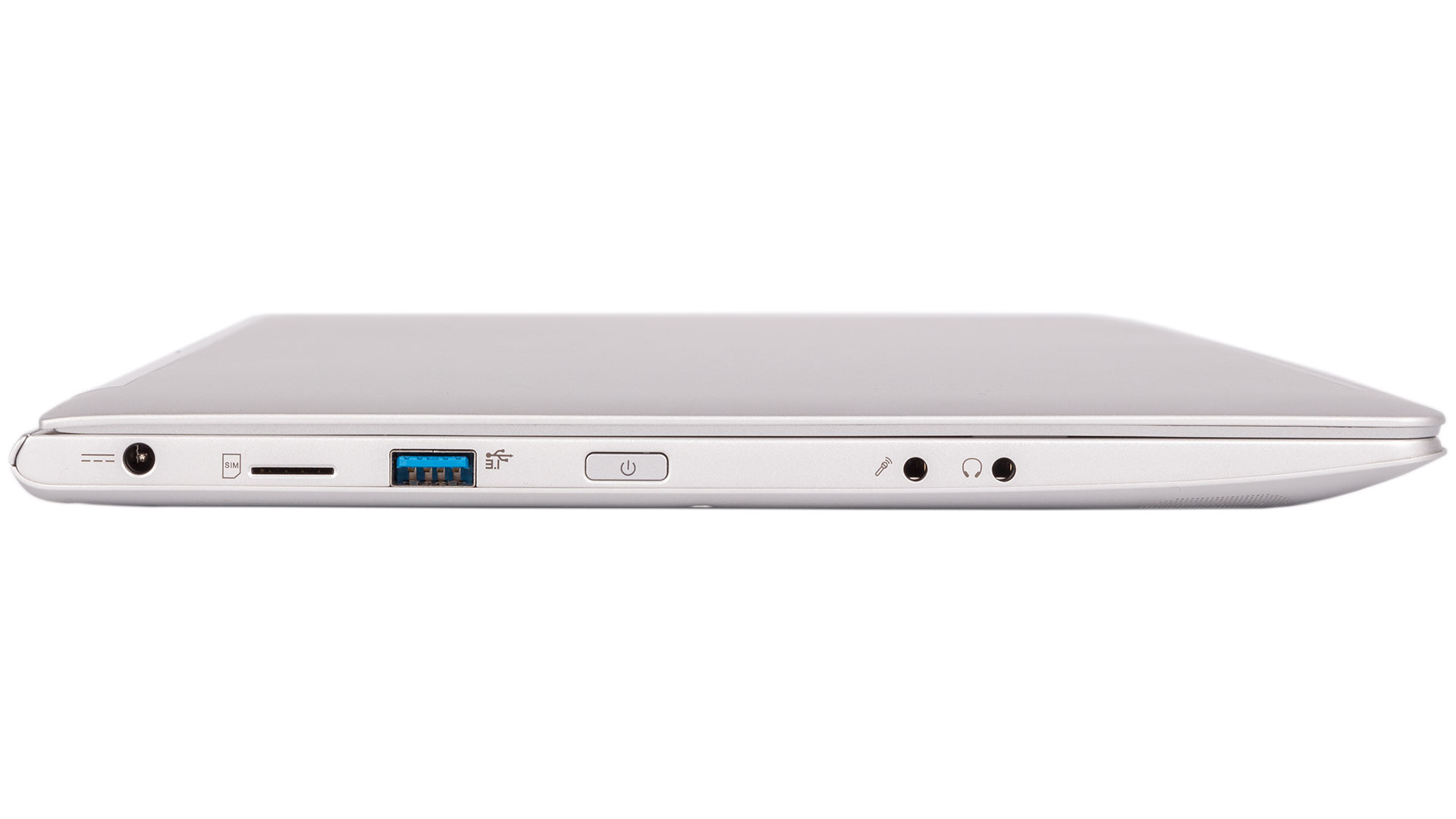
Along the left, you’ll find a single USB 3.0 port, a SIM reader, and separate headphone/microphone jacks (rather than the more modern, mobile-style connector). Most ports, however, are along the right, including a second USB 3.0 port, a Type-C USB port (limited to 3.0 speeds), mini-DisplayPort and HDMI outputs, a six-in-one SD/MMC card reader, and they’ve even managed to squeeze in a LAN port. All in all, a great selection of ports for a modern laptop.

The Lafité III thankfully comes with no bloatware (though you can buy software for PC Specialist to install for you). The only extra application is the Control Centre, which has basic power settings, fan control including custom settings, and a few other bits. Sadly, it’s not the cleanest software, and it’s a shame because with a bit of clearing up and some UI tweaks it would be a handy little app.
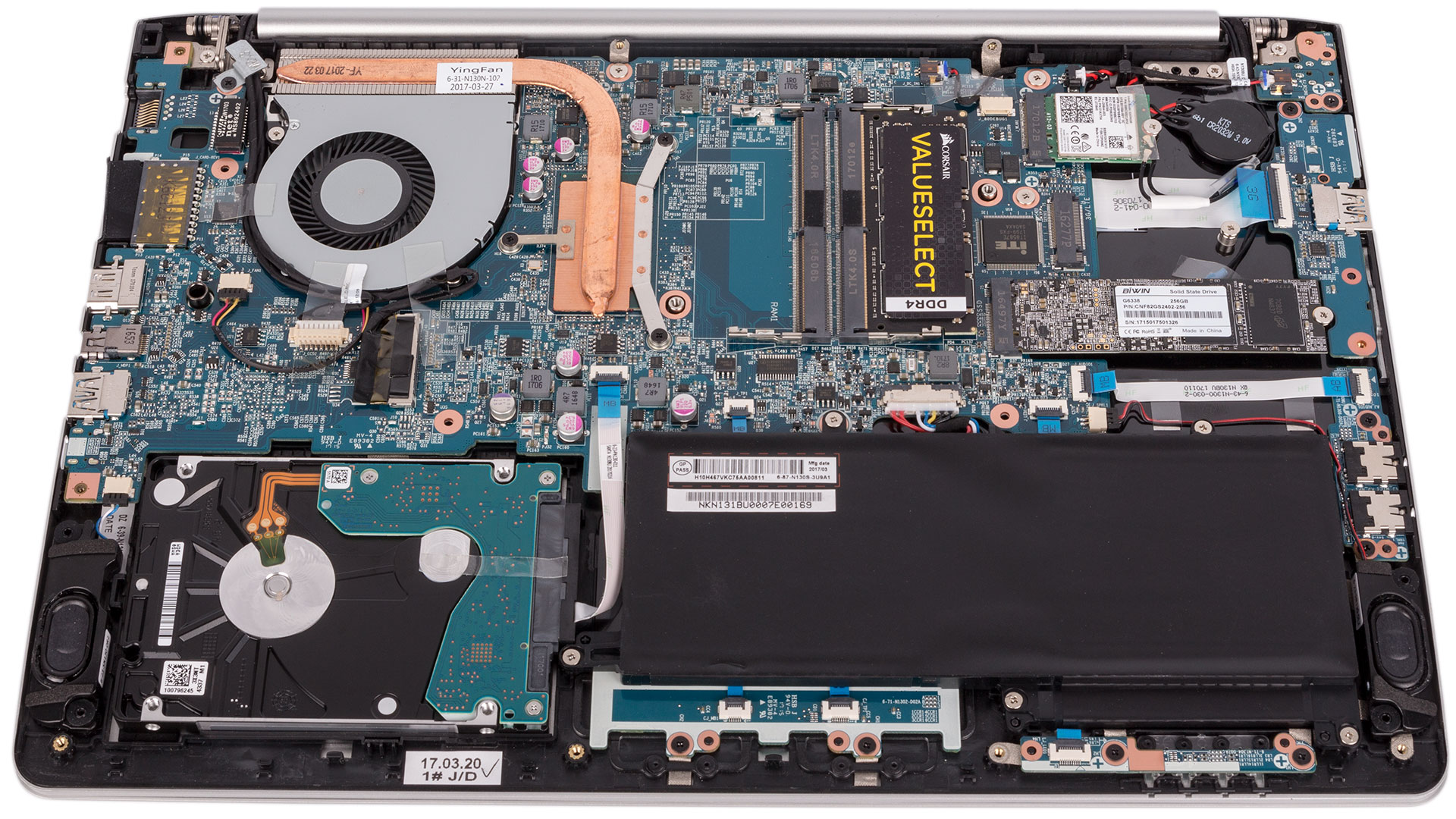
Dissembling the chassis involves prying off the keyboard, so bear this in mind if you like upgrading further down the line. Looking inside, we see that the Intel Core i5-7200U CPU is cooled by a single heat pipe and one fan – not surprising given that it has a TDP of just 15W. The fan is aligned with vents in the bottom and exhausts through vents in the rear which are partially blocked by the screen hinge. You can upgrade this CPU to the Core i7-7500U, but this has the same TDP as the former, so it shouldn’t pose much more of a cooling burden.
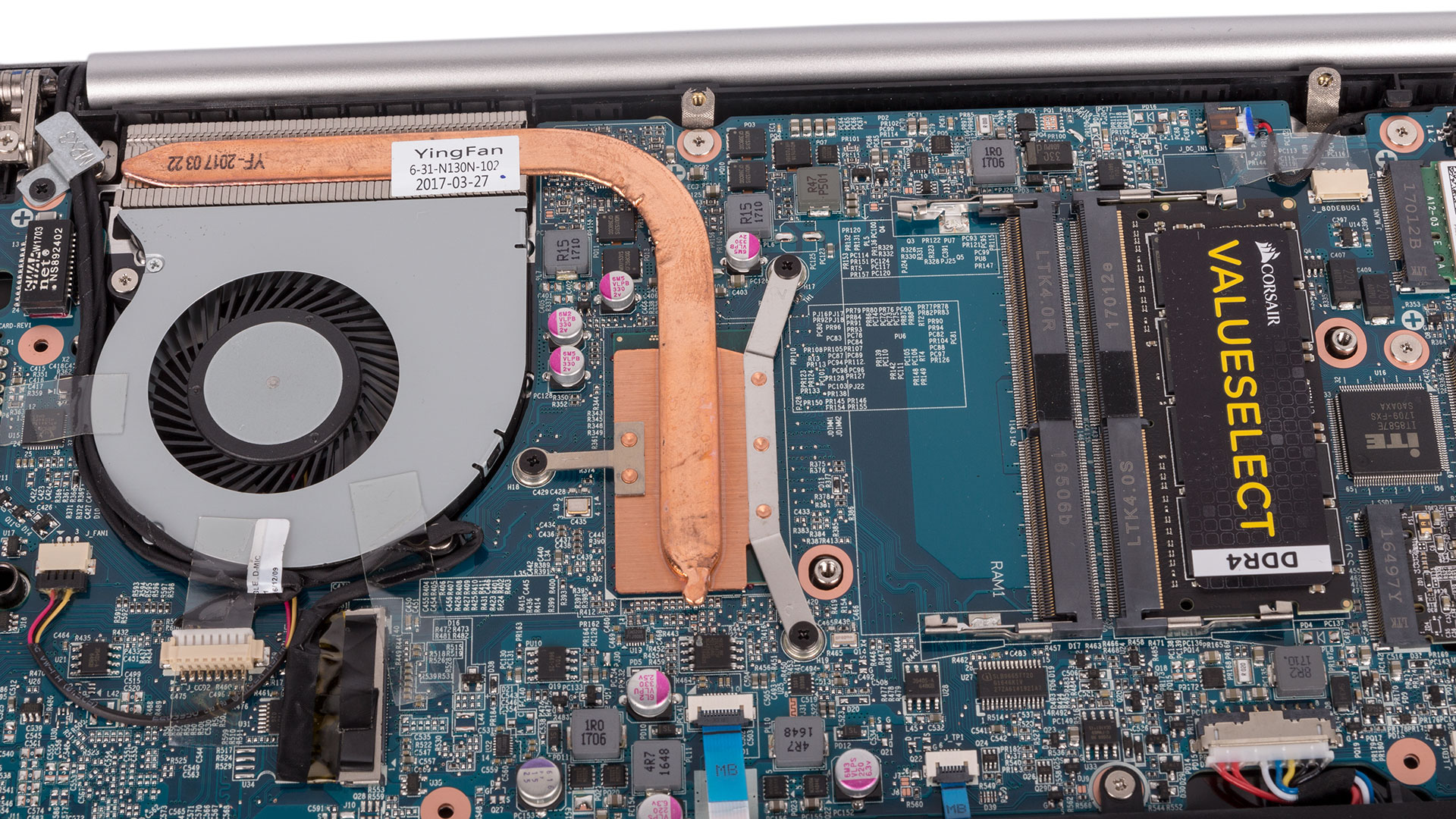
A single 16GB stick of Corsair Value Select 2,133MHz DDR4 gives you plenty of memory, but we’d prefer a dual-channel setup given that it’s supported. The only dual-channel option in the configurator, however, is for two 16GB modules, which is excessive.
For the M.2 drive, PC Specialist is using an OEM BiWin part (final models should be the WD Blue, though). There’s little information about this drive, but it’s just a standard SATA 2280 M.2 SSD. NVMe PCIe SSDs can be ordered instead, but they are premium products, and for the price a SATA drive is a good choice. 256GB feels limited on gaming laptops these days, but here it’s fine, especially as it’s backed up by a 1TB Seagate BarraCuda drive.
The Intel AC-8265 module provides 867Mbps 802.11ac Wi-Fi and Bluetooth 4.0 support.
The battery capacity is only 36Wh, but this is a laptop with many a low-power part, so we reckon it should still last a while, and a balance of course has to be struck with the size of the thing too.
Specifications (as reviewed)
- CPU Intel Core i5-7200U (2.5GHz base, 3.1GHz Turbo)
- CPU threads Four (dual-core with Hyper-Threading)
- Memory 16GB (1 x 16GB) 2,133MHz DDR4
- Graphics Intel HD Graphics 620
- Storage 1 x BiWin 256GB M.2 SATA 6Gbps SSD, 1 x Seagate BarraCuda 1TB 5,400 RPM HDD
- Screen 13.3" IPS, 1,920 x 1,080
- Dimensions (mm) 329.8 x 225 x 17.8 (W x D x H)
- Networking Intel AC-8265 802.11ac Wi-Fi, Bluetooth 4.0
- Audio Intel two-channel HD audio, 2 x speakers
- Keyboard backlighting Yes (white)
- Battery Li-Ion, 36Wh
- Webcam 1.0 MP
- Weight 1.53kg
- Operating system Windows 10 64-bit
- Ports 1 x USB 3.0 Type-C, 2 x USB 3.0, 1 x HDMI 1.4, 1 x mini-DisplayPort 1.2, 1 x Gigabit LAN, 2 x 3.5mm audio jacks (headphone, microphone), 1 x SIM reader, 1 x 6-in-1 SD/MMC card reader
- Warranty Three years (one month collect and return, two years parts, three years labour)

MSI MPG Velox 100R Chassis Review
October 14 2021 | 15:04

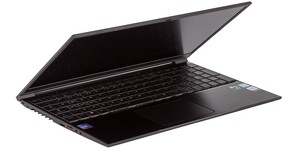
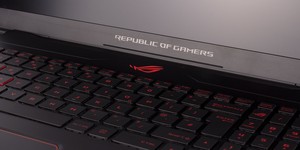





Want to comment? Please log in.